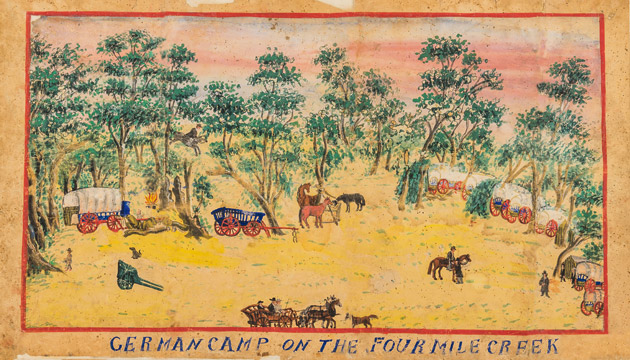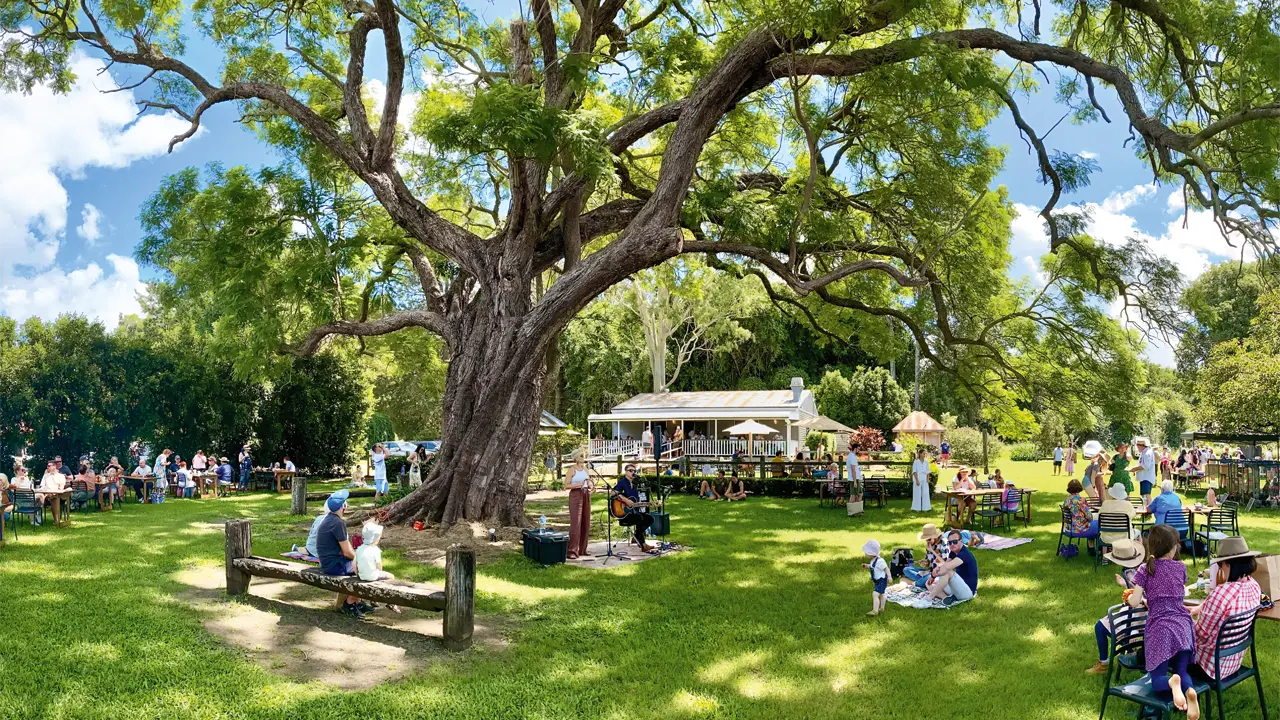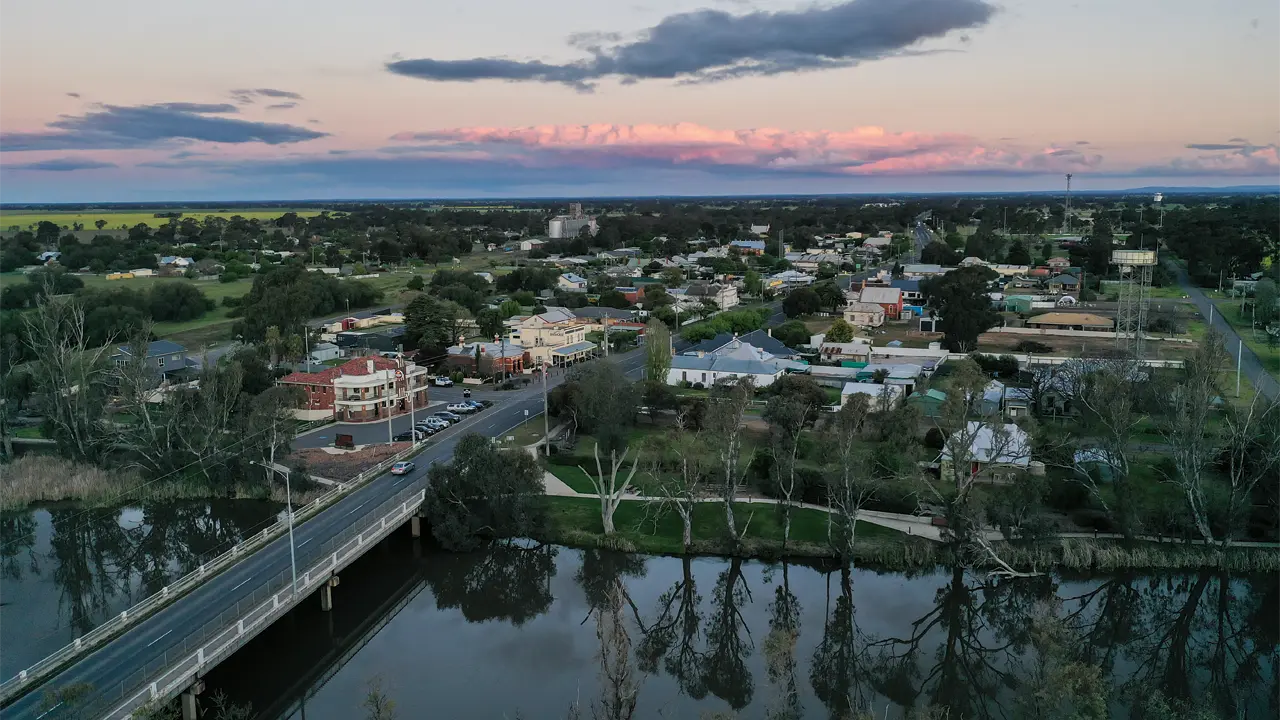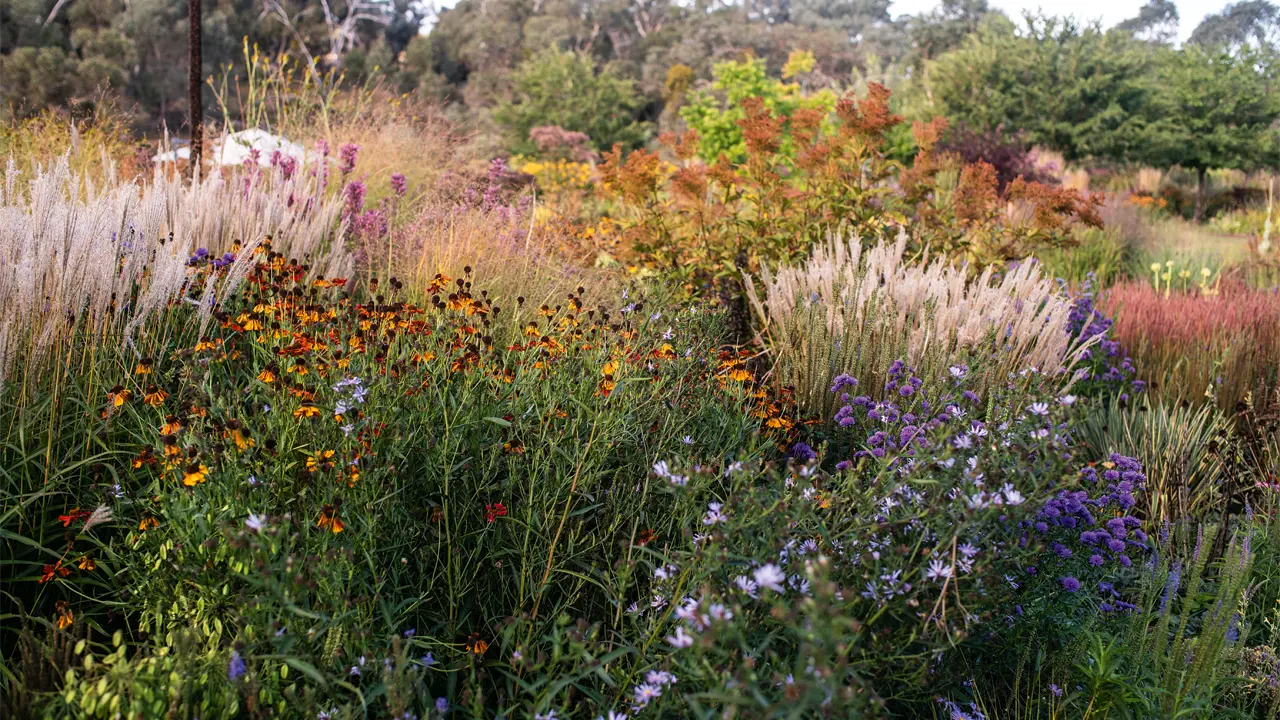A century and a half ago, a group of German settlers upped stumps in the Barossa Valley and travelled by wagon for six weeks to the Riverina, where they settled.
Story John Dunn
Wagons wheeled many of the first settlers to the southern Riverina of New South Wales, and today both wagons and wheels – in cairns, murals, logos and even main street furniture – have become proud and symbolic reminders of a significant internal migration in the late 19th century. Many members of the German community in South Australia’s Barossa Valley decided that their future there was limited and that they should explore opportunities elsewhere.
“About this time New South Wales opened up much of the Riverina for small farm settlement,” says Dirk Spennemann, a cultural heritage academic at the School of Environmental Sciences at Charles Sturt University in Albury. “Farmers could select up to 320 acres [149.7 hectares] of fertile land at a price 10 times lower than the South Australian rate.”
So 56 of them – half of whom were less than 10 years old – made a six-week trek of about 1000 kilometres in their covered wagons in 1868 to land north of Albury. They stopped initially at what is now known as Jindera, where other German families had previously arrived, before moving on to a nearby area centred around present-day Walla Walla. In the months ahead, both of these towns will begin a series of celebrations to mark the 150th anniversary of that historic journey and German settlement generally. A highlight will be wheels of a different kind – a cavalcade of cars mostly covering the same route.
This story excerpt is from Issue #120
Outback Magazine: August/September 2018










